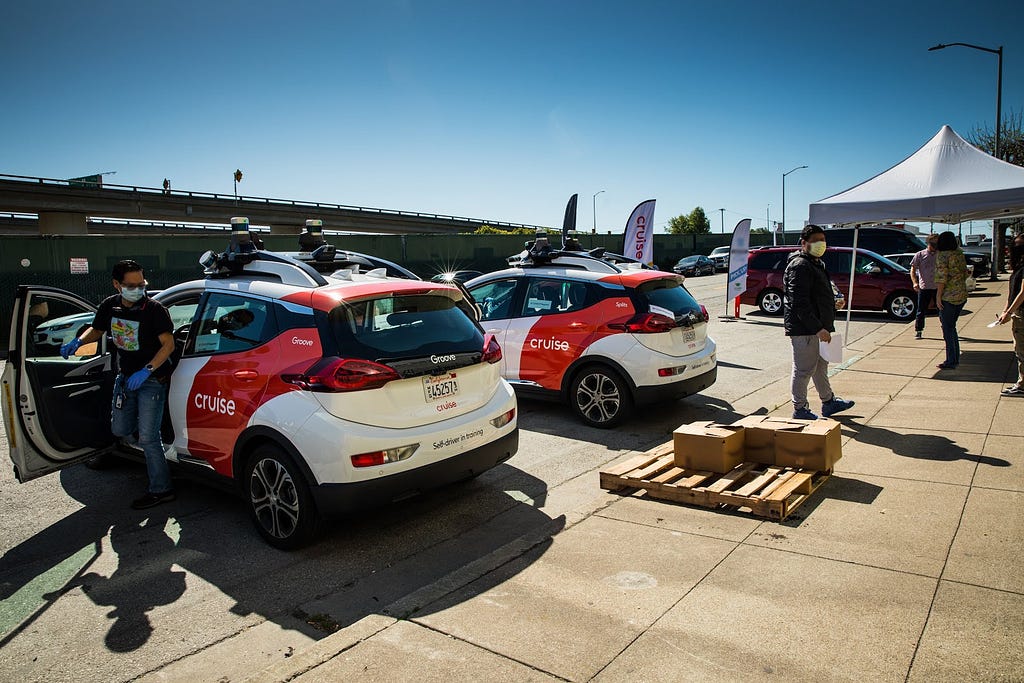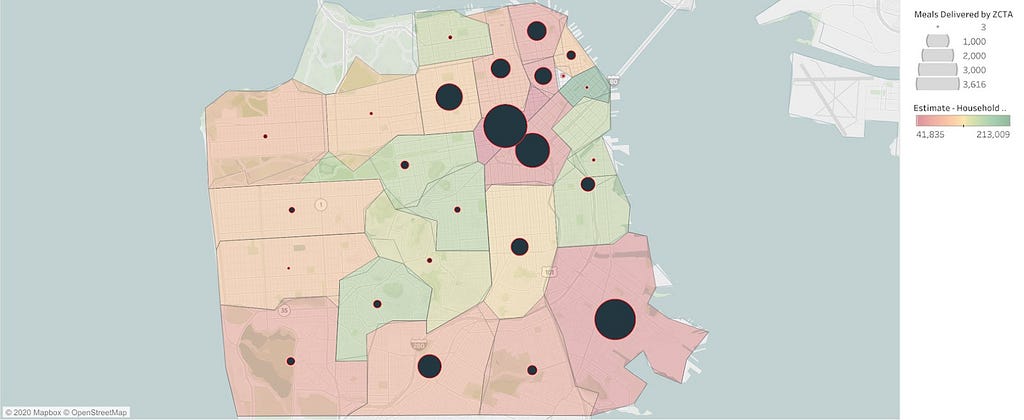We’ve redeployed our all-electric, self-driving fleet to serve some of San Francisco’s most vulnerable communities.
The impact of the COVID-19 outbreak on San Francisco has been profound. When we saw the enormous toll this crisis was having across our hometown, we asked ourselves, “What can we do to help and how can we do so safely?”
A rise in food insecurity was one of the first indicators of the breadth and depth of the crisis. In March, a few short weeks into Shelter in Place, we heard from neighborhood food banks about how they were struggling with unprecedented demand. The SF-Marin Food Bank, which serves the greatest number of participants in the city, was looking to scale from serving hundreds of households to more than 10,000 — virtually overnight.
Local organizations were also forming to meet the soaring demand. Lenore Estrada, the owner of an SF pie bakery, Three Babes Bakeshop, launched a new program in the early days of the pandemic. SF New Deal distributes meals to sites across the city in collaboration with UCSF’s Division of Citywide Case Management, Tenderloin Housing Clinic, The San Francisco African American Faith Based Alliance, and the City of San Francisco’s Human Rights Commission.
Both SF Marin Food Bank and SF New Deal faced the same challenge, searching for ways to scale their delivery and reach more households. To support these crucial organizations, Cruise began to volunteer our all-electric, self-driving fleet in April to deliver meals across the city.

To date, we have completed more than 50,000 contactless deliveries of groceries and meals to San Francisco’s most vulnerable and underserved populations. Over 80% of deliveries went to neighborhoods below the San Francisco household poverty line¹.

Safety is paramount to us at Cruise. To ensure we support our partners, while keeping our employees, AV Test Operators, and the public safe, Cruise implemented significant measures to ensure safe operations, and shared our updated approach with public officials at the city and state level. All pick-ups and drop-offs are contactless, and we’ve established new, comprehensive protocols that follow CDC health guidance to protect the AV Test Operators performing this essential service.
Serving our communities is core to our mission. We’re humbled to continue to help these incredible organizations and food programs to support the community at this time. We have witnessed additional ways in which these efforts have made an impact beyond the groceries and meals we delivered. Our AV Test Operators have shared how this project has given them additional meaning, hope and motivation to do their best work. Here is a section from a letter written by Francis Sherry, our AV Test Operator, to a community of Cruise AV Test Operators shortly after completing a shift:
“We are not just delivering food, we have managed to integrate into the fabric of our city with organizations now interacting with us and helping us identify opportunities to put our AVs to even greater benefit to our community.”
This pandemic has shown how vital self-driving technology is and how it can be used to support crisis relief. We believe that the future of transportation will be a fleet like the one Cruise is developing — one that is powered by all-electric, self-driving technology that will have a multitude of use cases to connect, support, and strengthen the communities we serve. Our vision for that is more clear than ever.
¹ Deliveries completed in May, Census 2018 American Community Survey
Cruise’s Self-Driving Fleet Makes 50,000 Contactless Deliveries & Counting was originally published in Cruise on Medium, where people are continuing the conversation by highlighting and responding to this story.